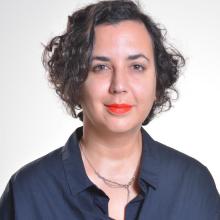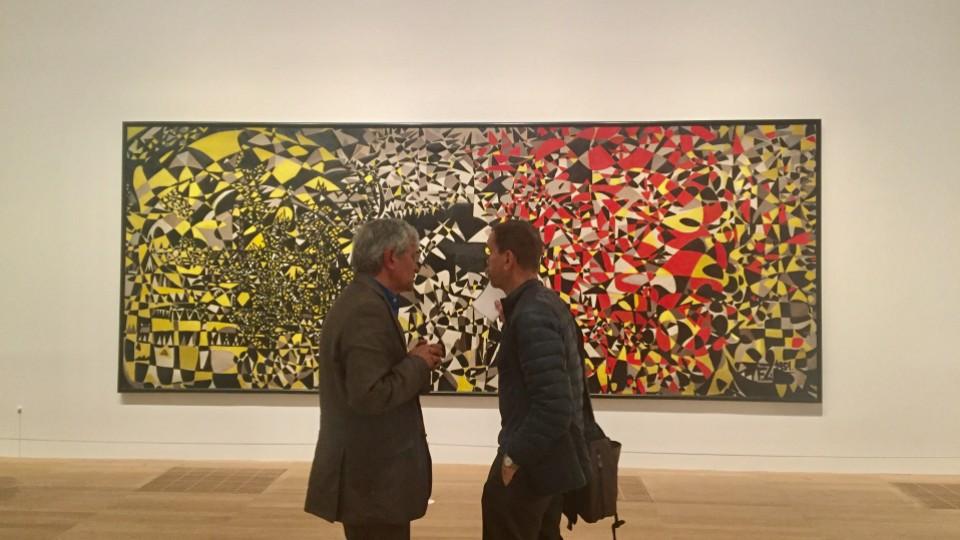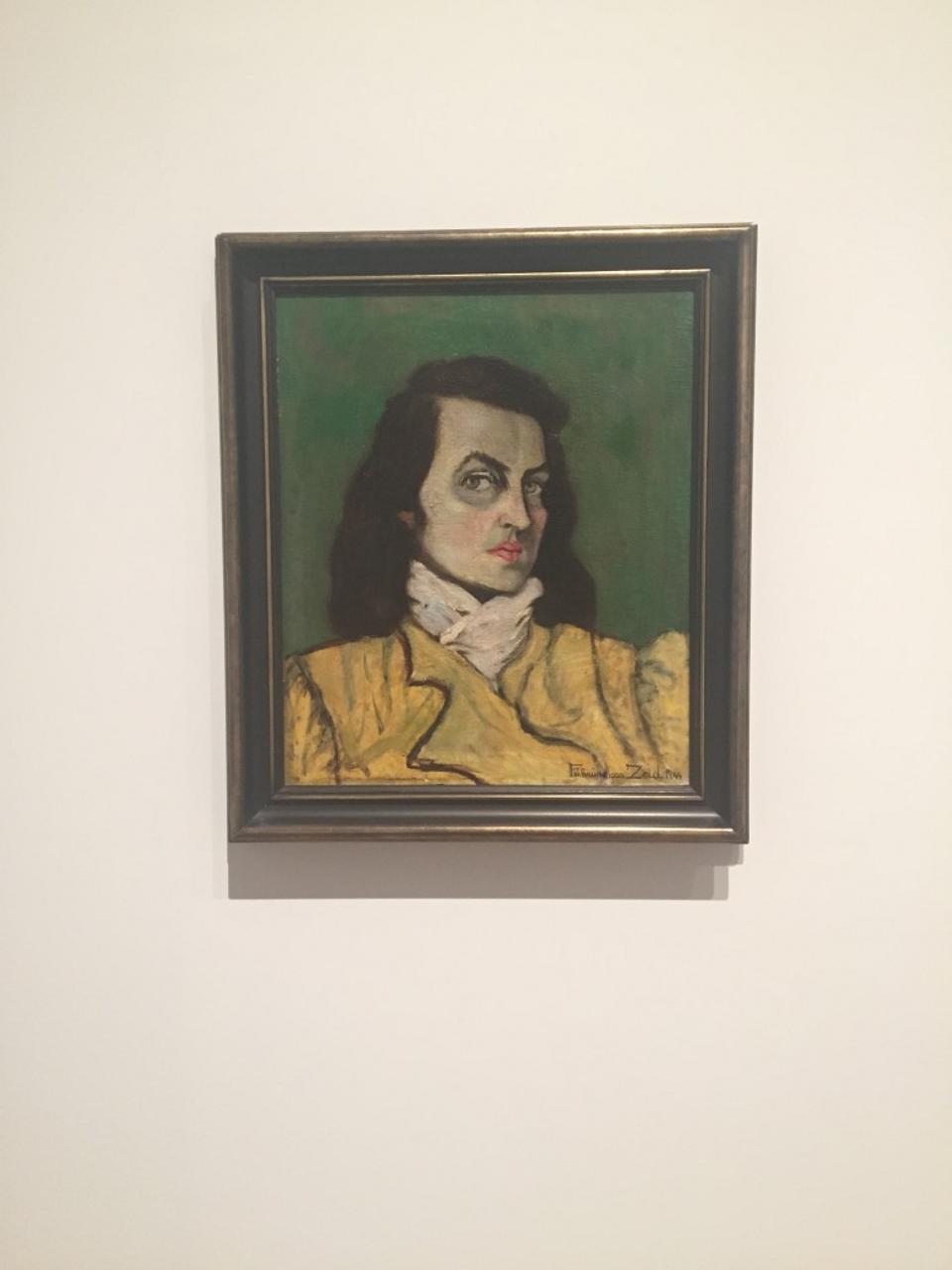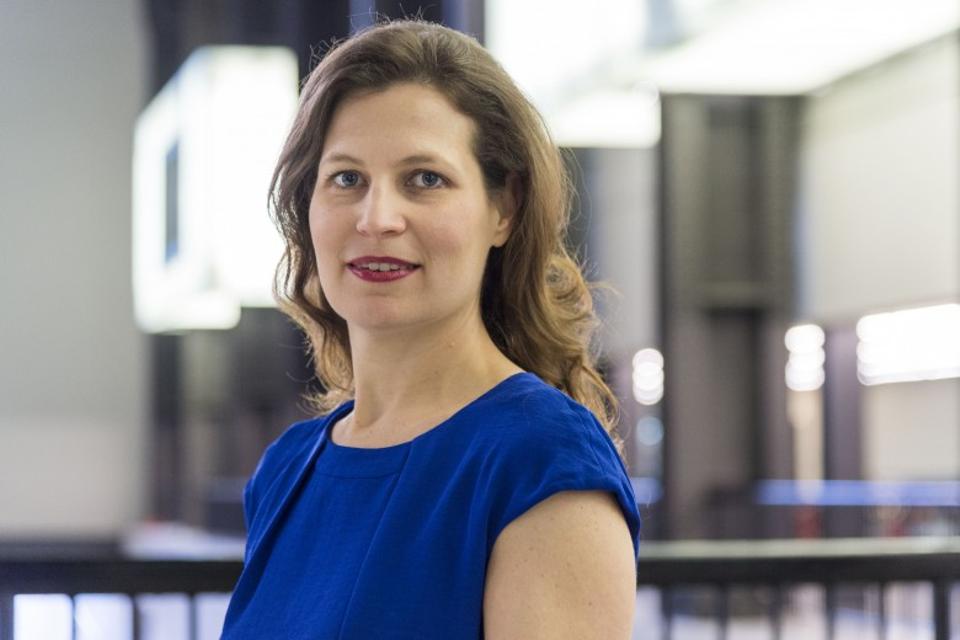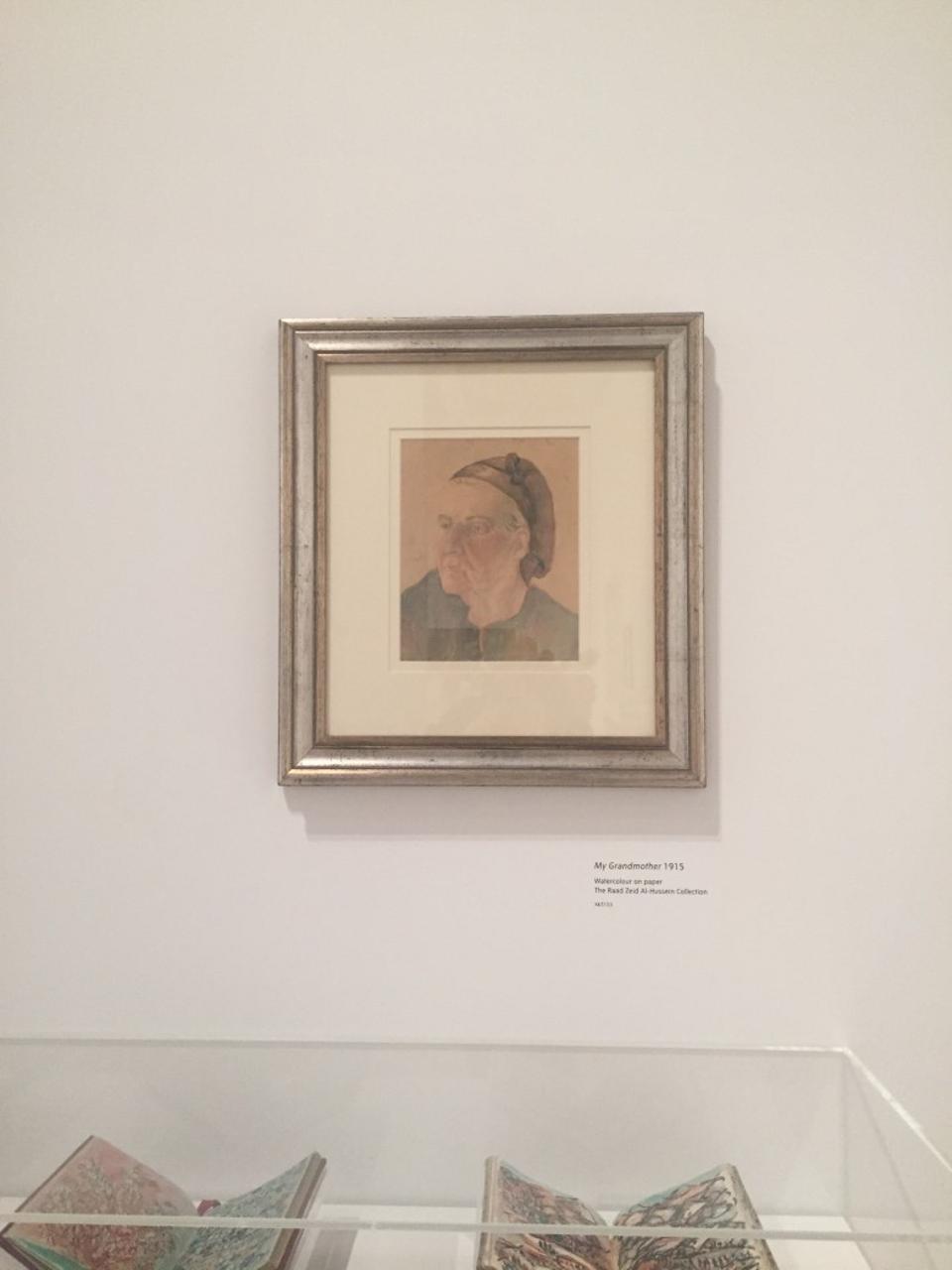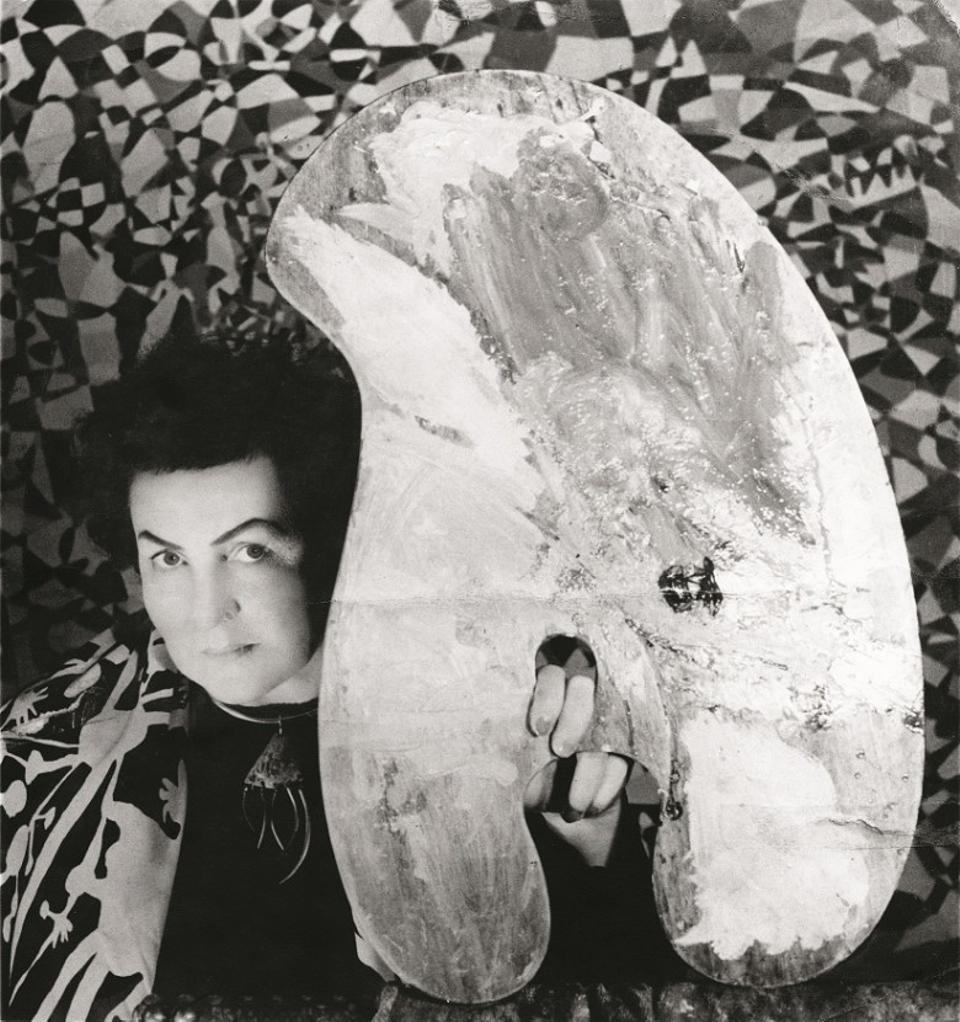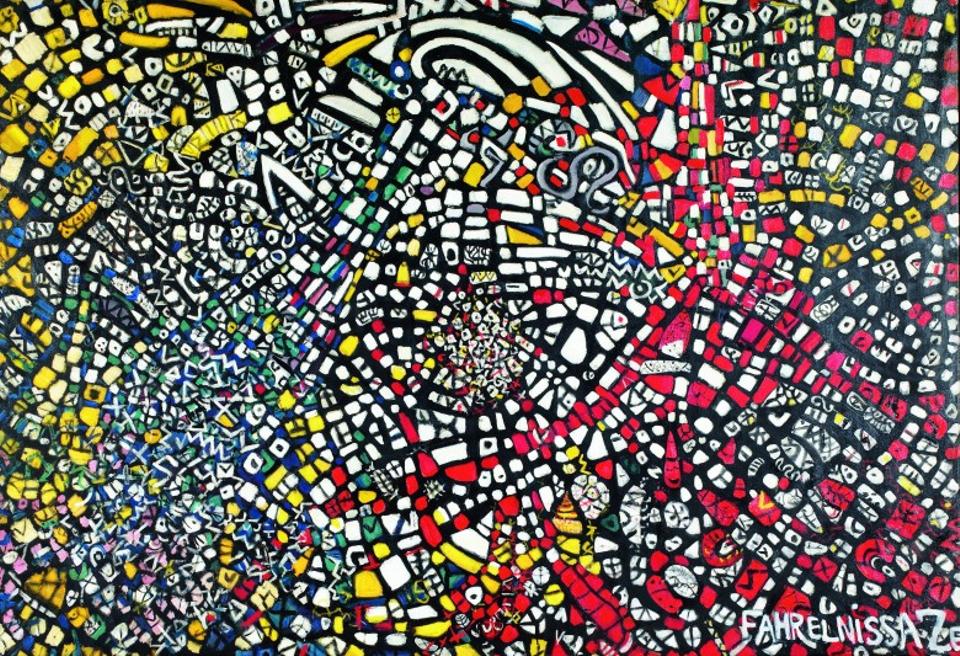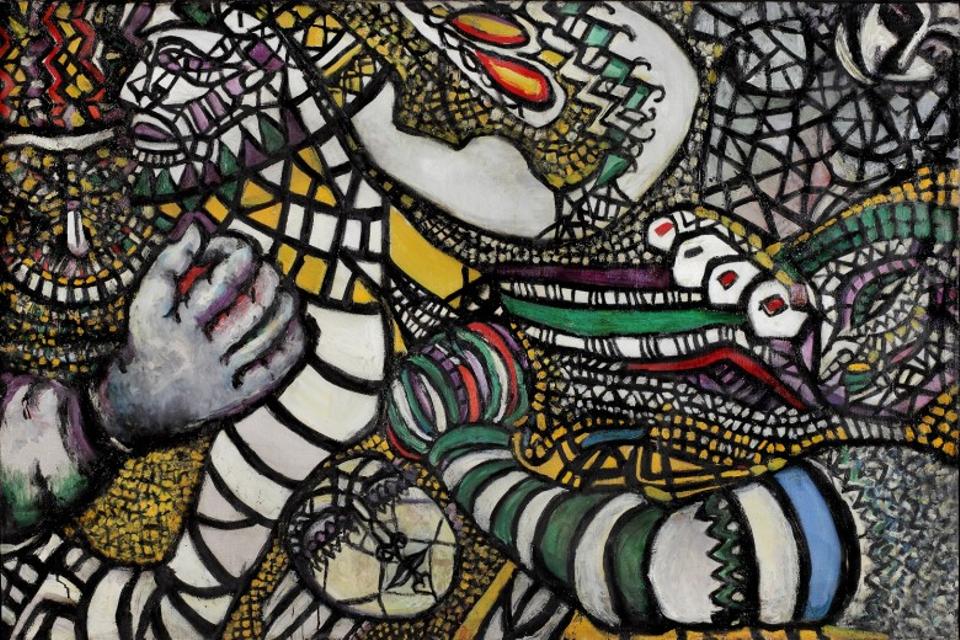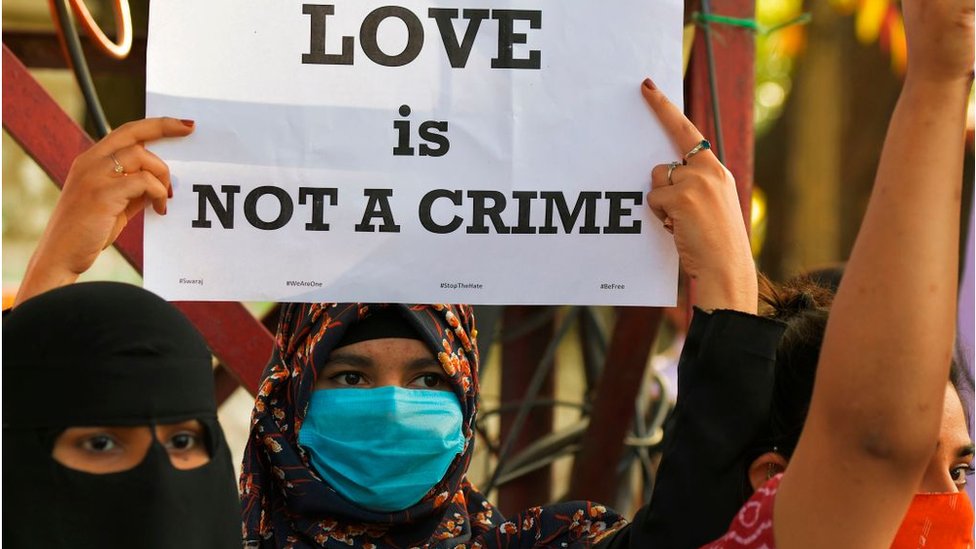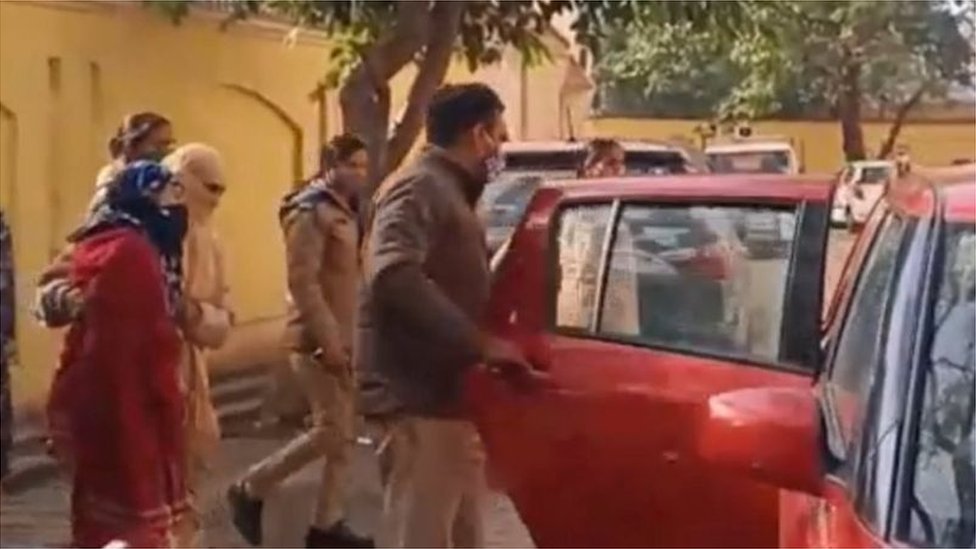Arter in Istanbul, “a sustainable, vibrant cultural hub” in the making
MELIS ALEMDAR
24 SEP 2019
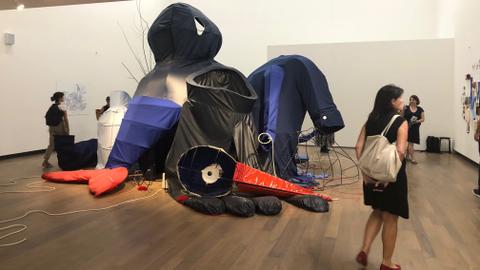
Contemporary art space Arter’s move into its new building in Dolapdere became a cause for celebration in Istanbul’s art circles in September. We talked to Arter’s Communications Director Ilkay Balic to get a better understanding of this new space.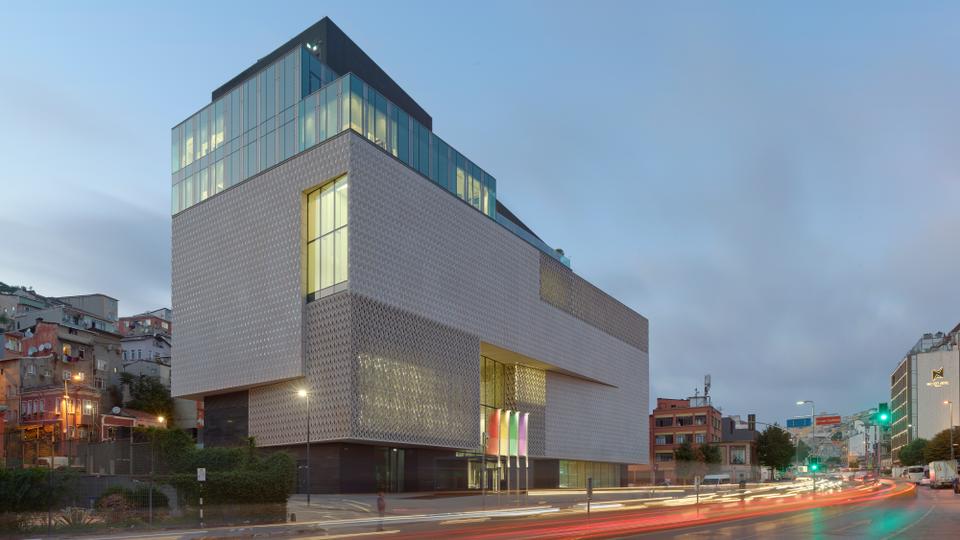
Arter's new building, designed by Grimshaw Architects of London, is located in Dolapdere, Istanbul. (Cemal Emden / Arter)
Arter opened with seven exhibitions independent of each other, two of which are group exhibitions. Why were these exhibitions (themes/artists) selected for the opening?
Ilkay Balic: Arter’s inaugural programme features seven exhibitions in total, four of them drawn from its collection that comprises more than 1,300 works as of 2019.
As a main principle, our exhibition programme is committed to re-contextualising the [Arter] Collection by way of curated exhibitions; at the same time we make an effort to explore its potential in a broader perspective, namely through exhibitions based on a hybrid approach featuring works both from and outside the Collection.
Rather than dedicating a specific gallery to permanent collection display, we treat the Collection as a “pool of works” from which exhibitions are curated, with the aim of providing transitions amongst different themes, media, movements and temporal accents existing in the Collection.
At our new home, another line of programming will most certainly entail new productions. We will continue supporting the production of new works within the framework of our exhibitions as well as dedicating gallery spaces to exhibitions that consist entirely of new productions.
Can you briefly tell us about the seven exhibitions up right now?
IB: The collection-based group exhibition What Time Is It? is curated by Emre Baykal and Eda Berkmen, and formed around the concepts of memory, time and space.
Curated by Selen Ansen, Words Are Very Unnecessary is also a collection-based group exhibition that revolves around the themes of gesture, remains and trace.
Curated by Başak Doga Temur, the Altan Gurman retrospective exhibition is put together from the collection and brings to light the entire oeuvre of the artist who died in 1976.
Devised with a retrospective approach, Ayse Erkmen’s exhibition Whitish brings together works produced since the 1970s and new pieces the artist has produced specifically for this exhibition, offering an in-depth overview of Erkmen’s practice.
Rosa Barba's solo presentation titled The Hidden Conference comprises of a three-part film series that the artist shot at different museum storage facilities.
Inci Furni’s solo exhibition She Waited For A While comprises entirely of new works the artist has produced for this exhibition.
Celeste Boursier-Mougenot’s offroad, v.2 features three grand pianos that drift at different speeds in interaction with the speed and direction of the wind outside.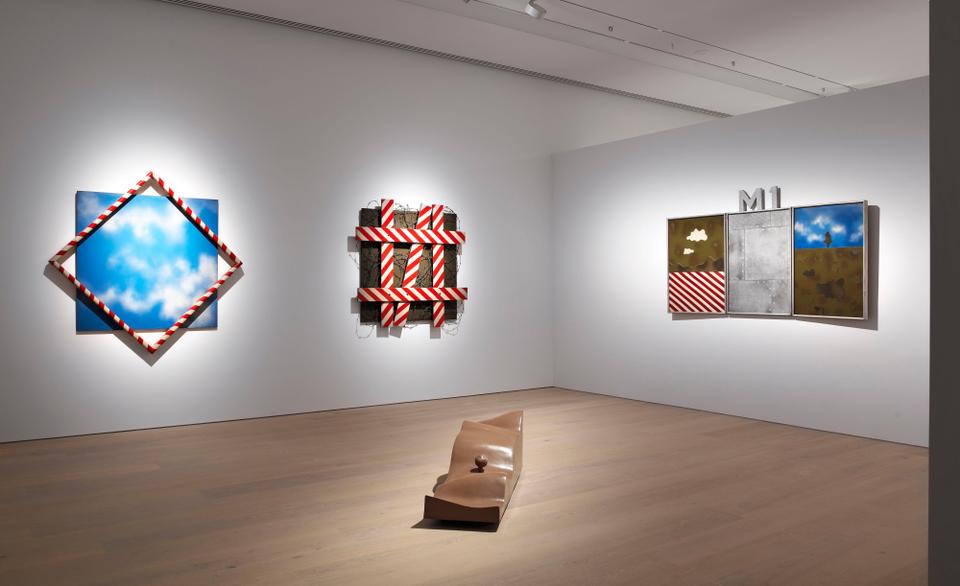
Altan Gurman's retrospective can be viewed at Arter until February 9, 2020.
(Hadiye Cangokce / Arter)
Arter offering free entrance from its opening in September until 2020 is an enticing offer for art lovers. What will be the pricing policy in 2020?
IB: In order to make our exhibitions accessible without the worry of affordability, we have pitched our entrance fee at a reasonable fee of 25 Turkish Lira.
Moreover, thanks to our Corporate Sponsor Tupras, visitors 24 and under will be able to view all Arter exhibitions free of charge as of January 2020.
Arter used to be on Istiklal Street since 2010, but the collection goes back to 2007. Did the Vehbi Koc Foundation know it would one day have its own 18,000 sqm building when it set out? How did the new building and exhibitions come about?
IB: The Vehbi Koc Foundation is Turkey’s first private foundation, under whose wings was created Turkey’s first private museum, bearing the name of Vehbi Koc’s late spouse Sadberk Hanım, in 1980. The Foundation’s involvement with contemporary art goes back to the year 2005, when a strategic plan was devised with the ultimate goal of founding a sustainable contemporary art institution.
Since 2006, many key steps were taken in this respect including the establishment of the collection in 2007, the commitment to sponsoring the Istanbul Biennial (in collaboration with the parent company Koc Holding) until 2027, publication of monographs of leading Turkish artists concurrent with the exhibition series “Adventure Istiklal” (in collaboration with Yapi Kredi Publishing) from 2007 to 2011, and the creation and management of Tanas, Berlin (in collaboration with Edition Block) from 2008 to 2013, among others.
The opening of Arter at its venue on Istiklal Street in May 2010 indeed marked an important moment in this series of steps and was a clear sign that the Foundation’s support for and efforts in the field of contemporary art were going to continue. Arter was announced as a preparatory testing ground, a platform for learning and exploration towards the actualisation of the museum-scale building that would also accommodate the collection and entail a much broader and more comprehensive content that we would carry into the future.
For the architectural design of the museum, a paid project competition was initiated in 2013. The winners of this competition were Grimshaw Architects of London, who have taken the lead in the design process with contributions by Thornton Tomasetti, Max Fordham, and Neill Woodger Acoustics. The construction of the building was started in 2015 and completed in 2019. We are more than happy and proud to be able to open Arter’s new home in 2019, which also marks the 50th anniversary of the Vehbi Koc Foundation.
Arter’s new building is conceived as a versatile space, presenting multi-layered possibilities to discover, enjoy and engage in a closer dialogue with art. The building consists of physically intersected spaces in a strong visual dialogue with the city. Sprawled across an indoor area of 18,000 m2, Arter’s main function areas are connected by a central atrium that serves as the heart of the building. Spread on six floors, the galleries feature varying volumes, ceiling heights and a high degree of flexibility.
At its new home, Arter will strive to be a sustainable, vibrant cultural hub, making its broad range of programmes accessible to everyone.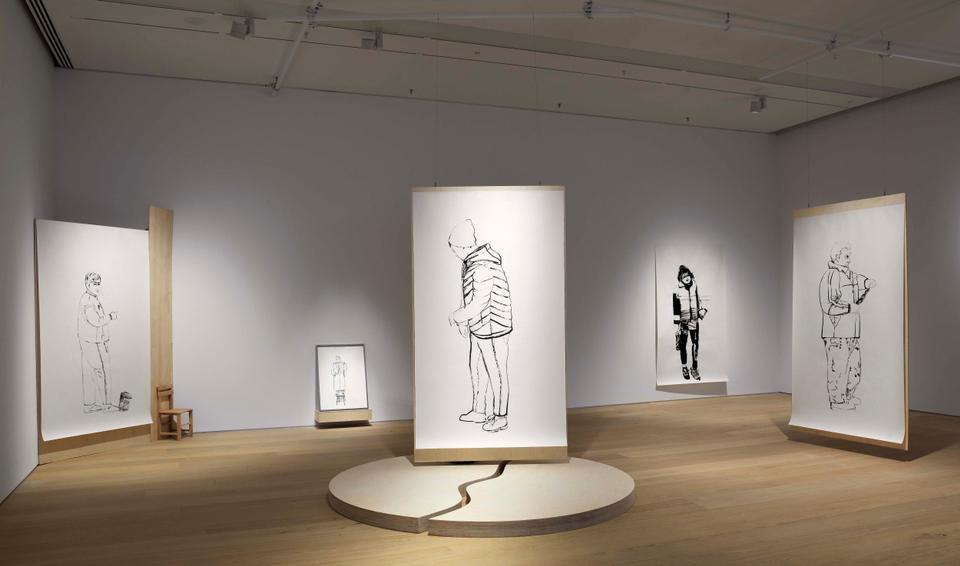
Inci Furni's 'She Waited for a While' exhibition is on view at Arter until January 26, 2020. (Hadiye Cangokce / Arter)
Why was Dolapdere, a not-yet-gentrified part of Istanbul selected for the new designer building for Arter? What do you envision the interaction between Arter and Dolapdere to be?
? What do you envision the interaction between Arter and Dolapdere to be?
IB: The original plan at the time where the strategic plan was devised was to create a campus of three signature buildings hosting three different collections (namely Sadberk Hanım Museum’s archaeological, Turkish-Islamic collections, and Arter’s collection of contemporary art); however, it proved very difficult to find a suitable site close to town centre. In order not to lose more time, the “campus” idea was relinquished and the decision was taken to pursue an alternative purely for Arter.
The Koc Family owned an old industrial building of 15,000 sq. m. in Dolapdere, a stone’s throw from Taksim Square and Gezi Park, which they kindly donated to the Vehbi Koc Foundation in 2013. Initially we considered the possibility of converting this industrial building to a museum, but restoration costs to comply with the new construction regulations were much too high, and thus rendered the conversion inviable. Subsequently, it was decided to demolish the old building and to construct a signature building on the same site; hence the location of Dolapdere.
Arter has arrived to Dolapdere as a new neighbour and aspires to be a good one indeed. Since day one, we have chosen to engage in close dialogue with our fellow neighbours, first by sending out letters addressed to each household, apologizing in advance for the nuisance that would come with the construction of a new museum building. Later on, we have collaborated with YADA Foundation for an exploratory research on the social and cultural structure of the neighbourhood as well as the expectations, hopes and worries of our neighbours concerning Arter’s relocation to Dolapdere.
While we continue to be in constant dialogue with the local authorities, community centres and NGOs in the area, we have also incorporated the intention of being a good neighbour into our programming. Arter’s membership programme will include a category of “Neighbour”, inviting the residents of adjacent quarters to visit exhibitions free of charge as well as offering special discounts in our events and learning programmes, bookstore and bistro. As part of our Learning Programme, we shall introduce monthly get-togethers with our communities, including artists, visitors, partners and neighbours to encourage listening and dialogue amongst different groups.
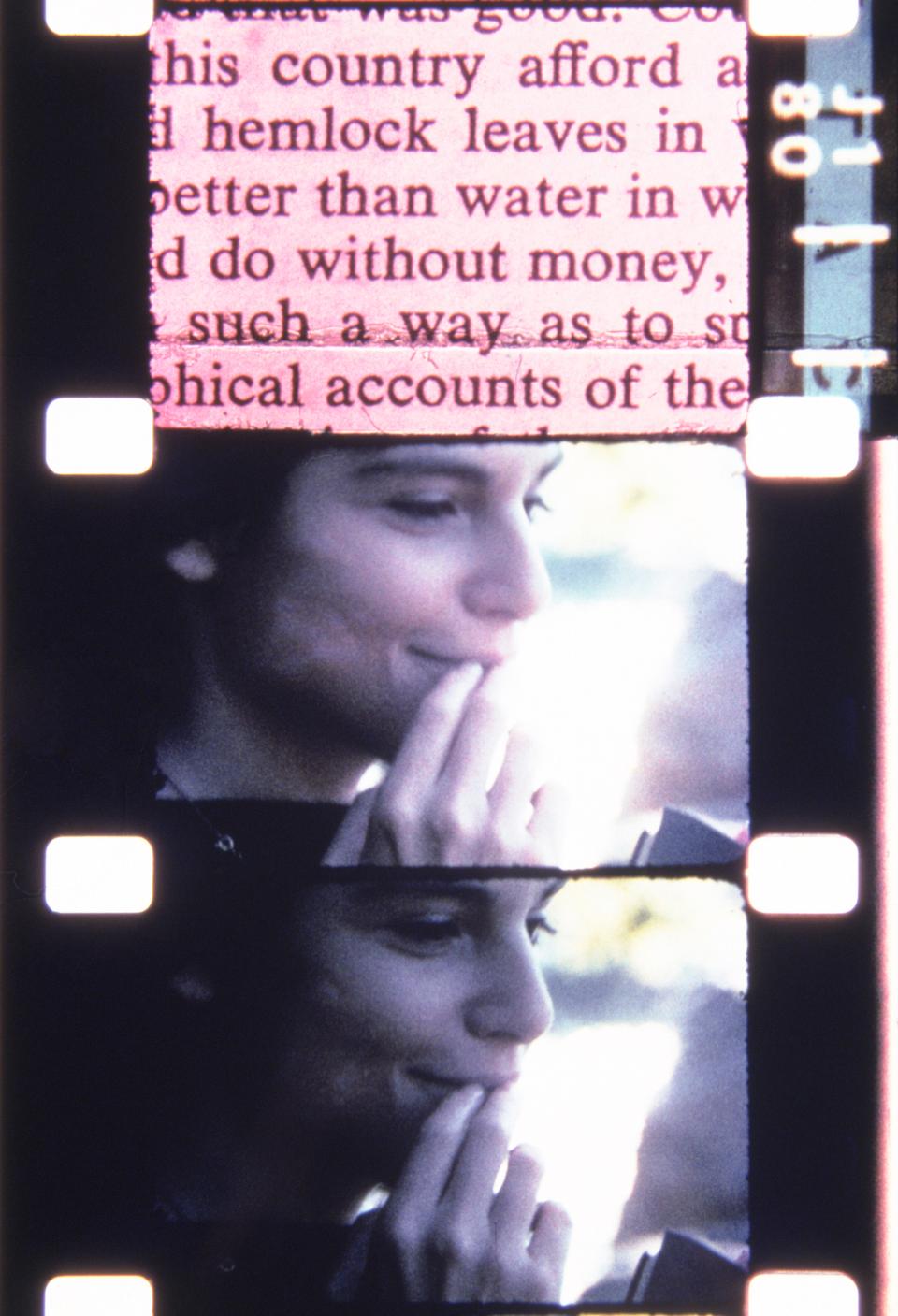
Jonas Mekas will be the first filmmaker whose films will be screened at Arter's film programme starting in October 2019. (Jonas Mekas / Arter)
Can you tell us a bit about Arter's other activities besides exhibitions? (such as workshops, film screenings, publications)
IB: At its new building in Dolapdere, Arter will present exhibitions drawn from its own collection as well as curated exhibitions of non-collection works. Furthermore, with events that bring together various disciplines of art, film and learning programmes, along with publications promise a rich multidisciplinary programme.
Our multidisciplinary events programme will feature outstanding and innovative examples of performing arts, classical, contemporary and electronic music, film, performance and digital arts, where possible in dialogue with the collection and exhibitions. Collaborating with local and international artists, curators and various institutions, we will also commission and co-produce new works.
Grimshaw Architects have designed two flexible performance halls, namely Sevgi Gonul Auditorium (named after the late daughter of Vehbi Koc, with whose legacy Arter’s construction has been funded through the Foundation) and Karbon, a 400 sqm “Blackbox” with state of the art theatre technology, which will meet the requirements of our targeted multidisciplinary, dynamic programme. The events will not be limited to Arter’s two performance halls, but are also held in different areas of the building.
Arter’s Film Programme will include regular weekly screenings in addition to retrospectives focused either on a theme or a director as well as comprehensive presentations enriched with talks and parallel events. The programme will kick off with a retrospective on Jonas Mekas.
Arter’s Learning Programme will present processes and activities that aspire to interpreting our times through art. Providing grounds for everyone to enjoy creative processes, the programme facilitates dialogue around contemporary art through exploring the interrelationships between its multiple contexts, the audience’s daily lives and imaginations. Shaped through a receptive and responsive attitude towards users’ affinities, the programme intends to build lasting connections between artists, audiences and partners.
The programme will feature? What do you envision the interaction between Arter and Dolapdere to be?
IB: The original plan at the time where the strategic plan was devised was to create a campus of three signature buildings hosting three different collections (namely Sadberk Hanım Museum’s archaeological, Turkish-Islamic collections, and Arter’s collection of contemporary art); however, it proved very difficult to find a suitable site close to town centre. In order not to lose more time, the “campus” idea was relinquished and the decision was taken to pursue an alternative purely for Arter.
The Koc Family owned an old industrial building of 15,000 sq. m. in Dolapdere, a stone’s throw from Taksim Square and Gezi Park, which they kindly donated to the Vehbi Koc Foundation in 2013. Initially we considered the possibility of converting this industrial building to a museum, but restoration costs to comply with the new construction regulations were much too high, and thus rendered the conversion inviable. Subsequently, it was decided to demolish the old building and to construct a signature building on the same site; hence the location of Dolapdere.
Arter has arrived to Dolapdere as a new neighbour and aspires to be a good one indeed. Since day one, we have chosen to engage in close dialogue with our fellow neighbours, first by sending out letters addressed to each household, apologizing in advance for the nuisance that would come with the construction of a new museum building. Later on, we have collaborated with YADA Foundation for an exploratory research on the social and cultural structure of the neighbourhood as well as the expectations, hopes and worries of our neighbours concerning Arter’s relocation to Dolapdere.
While we continue to be in constant dialogue with the local authorities, community centres and NGOs in the area, we have also incorporated the intention of being a good neighbour into our programming. Arter’s membership programme will include a category of “Neighbour”, inviting the residents of adjacent quarters to visit exhibitions free of charge as well as offering special discounts in our events and learning programmes, bookstore and bistro. As part of our Learning Programme, we shall introduce monthly get-togethers with our communities, including artists, visitors, partners and neighbours to encourage listening and dialogue amongst different groups.
Jonas Mekas will be the first filmmaker whose films will be screened at Arter's film programme starting in October 2019. (Jonas Mekas / Arter)
Can you tell us a bit about Arter's other activities besides exhibitions? (such as workshops, film screenings, publications)
IB: At its new building in Dolapdere, Arter will present exhibitions drawn from its own collection as well as curated exhibitions of non-collection works. Furthermore, with events that bring together various disciplines of art, film and learning programmes, along with publications promise a rich multidisciplinary programme.
Our multidisciplinary events programme will feature outstanding and innovative examples of performing arts, classical, contemporary and electronic music, film, performance and digital arts, where possible in dialogue with the collection and exhibitions. Collaborating with local and international artists, curators and various institutions, we will also commission and co-produce new works.
Grimshaw Architects have designed two flexible performance halls, namely Sevgi Gonul Auditorium (named after the late daughter of Vehbi Koc, with whose legacy Arter’s construction has been funded through the Foundation) and Karbon, a 400 sqm “Blackbox” with state of the art theatre technology, which will meet the requirements of our targeted multidisciplinary, dynamic programme. The events will not be limited to Arter’s two performance halls, but are also held in different areas of the building.
Arter’s Film Programme will include regular weekly screenings in addition to retrospectives focused either on a theme or a director as well as comprehensive presentations enriched with talks and parallel events. The programme will kick off with a retrospective on Jonas Mekas.
Arter’s Learning Programme will present processes and activities that aspire to interpreting our times through art. Providing grounds for everyone to enjoy creative processes, the programme facilitates dialogue around contemporary art through exploring the interrelationships between its multiple contexts, the audience’s daily lives and imaginations. Shaped through a receptive and responsive attitude towards users’ affinities, the programme intends to build lasting connections between artists, audiences and partners.
The programme will feature a variety of events and interpretation tools including guided tours, audio guides, artist talks, panel discussions, workshops and podcasts. To accommodate these activities, our new building has a dedicated learning studio with flexible modular layout, a hands-on production studio for users who would like to engage in artistic production themselves and a digital lab area.
At the same time, a research programme aimed at professionals and cultural producers is also initiated. Arter Research Programme aims to support cultural producers in articulating their own perspectives, artistic research methodologies and language of expression in relation to the times in which we live. For the first edition of Arter Research Programme, ten participants have been invited based on their research topics, diverse methodologies and engagement with collective processes. There will be revisions made to the programme based on the experience gathered in the first edition.
At its new building, Arter will continue presenting publications that aim to enhance and stimulate conversations around contemporary art. The publications programme will also launch two new series focusing on Arter's collection: Arter Close-Up and Arter Background.
Source: TRT World





